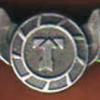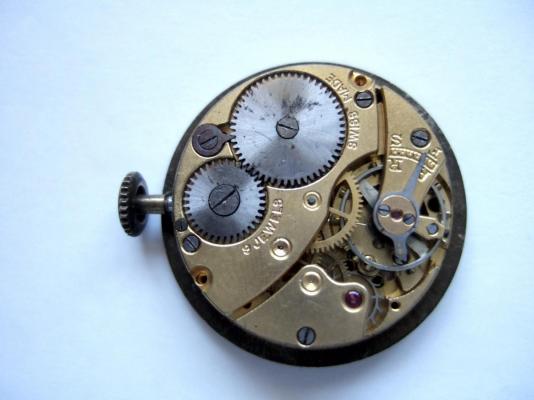Leaderboard
Popular Content
Showing content with the highest reputation on 07/24/14 in all areas
-
2 points
-
That's about right, by the way, as you can see the number on the back is not necessarily the same as the one on the dial. If you need to order parts, -- just in case -- those numbers will be very useful/essential to get the exact replacement part you need. (both the dial's and the one engraved on the back). Some parts "belong" to the case type, some to the movement itself and some go hand in hand with the dial.1 point
-
1 point
-
I have a digital Mitutoyo, and a conventional Moore and Wright. I have had them for 26 and 29 years respectively and have never had an issue with accuracy or battery usage. I have changed the battery in the Mitutoyo 10 times over the years and it does a fair amount of work. As for micrometers I user Moore and Wright. as with the conventional vainer callipers I have had my micrometers for 29 years and again never had a problem with accuracy.1 point
-
Just done a full refurb on Pogue (yellow face) version of this watch with 3168B movement. Was gaining 2.5 hrs/day before service and now run for 11 days without losing a second!! You can use the 3169A data as most of the parts are visually the same. I think there we a few changes to the chrono wheels (58 & 47) and chrono bridge but nothing to indicate different assembly. The following are my key points which may help you, the numbers refer to the steps in the 6139A chart you have from Cousins (if you want a coloured version then it can be found on www.scribd.com/doc/121154984/seiko-6139.) Chronobridge (44) - 6139A/B differences are that some parts are rivetted on B but screwed on A. No need to remove these parts just clean as-is. Intermediate Minute Recording Wheel on chrono bridge is fixed onto post in A but is a removeable wheel in B. This wheel is difficult to refit as the chrono bride hammer spring puts the bridge under some tension and it moves all over the place! I used a couple of very small pieces of Rodicao to hold the wheel to the chrono bridge, fitted the bridge then carefully removed the rodico. You only need to 'catch' the edges of the teeth in one hole and at the edge of the plate, too much and you wil have trouble removing all the rodico. I also lubes the pivots very sparingly with Moebius 9010. Great care is needed refitting the chronobridge as pivots cab easily be bent/damaged. Do not remove the adjusting screws on the centre chrono wheel (58) or the first coupling lever (50) The day finger (31) has a cut-out and a finger. The protrusion on the Date Finger (32) fits into this cut-out NOT the hole at the end of the finger. The intermediate date wheel (34) is small a plastic wheel with 2 cogs and the teeth can damage easy when checking motion if any tightness in setting train (I know I did it!!). I sourced a new one and it was metal (much better!) so I think this was an A-B mod (to save money on parts cost??). The operating lever spring (48) goes round the post in the operating lever and not the screw post (as done on an Ebay video!) The Pillar Wheel Jumper Spring locates into the pawl at the bottom of the pillar wheel not the pillars. The Day Corrector Finger (27) must not be trapped under the dail guard(24), pressing the crown fully in should send it to the centre of the movement. Also check that the spigot for the Day Corrector Finger is fully engaged in the dail guard (this can cuase the finger to jam under the guard). The Dial Guard (34) has an incorporated spring for the Day Star Dial Disk (22) and must be clicked into the star inderneath the disk when the disk is fitted. I had to replace the mainspring and used the one from the base movement as one for the A&B are no longer available. 401615 for 410616. The barrel and arbour are all the same. Leave the pallet and balance until you have assembled the chrono etc as you can then check all is free and the chrono works, turn the screw in the middle of the barrel 1/2 a turn or so to help. Be careful when refitting the centre second chrono hand as it is not unknown for the jewel to be pushed out, Seiko have a special movement holder. If you are prepared to remove the case bezel (there is a notch under the bezel at 12 oclock to prise it off) and the crystal (just pops out, fitted on gasket in holding ring) then you can use the pushers etc for resetting the hands as explained in the chart which is easier than handling the movement with the dial fitted outside the case. When done the crystal and bezel can be refitted using a case press (do not overpress, the bezel will just click into place) I used Moebius 9010 to replace Synt-Oil-A and Moebius HP1300 to reaplce S4. I used Moebius 8317 on the mainspring barrel. Good tip is to search google for Seiko 6139B PICTURES and follow links, much quicker than searching text data. Hope this helps.1 point
-
Grind the tip of the back opener to fit the slot. Just make it as thin as you can get away with, without turning it into a razor edge.1 point
-
Ideally I'd like something like a big bathtub (without the sinkhole), with rounded corners.. Anil1 point
-
What is the difference in price compared to a swiss set? How much are you saving? On the staking set... Unless someone with experience using both voices out I'll probably stick with Swiss. Apart from the design, quality of the steel is important and nobody does this better than the swiss/germans. Scenario.... you might buy these tools and find that you are unable to 'stake' a wheel properly and put it down to your ineptitude. But it could be a case where the tool itself is at fault but since you already bought the set you'd probably tell yourself that maybe you aren't cut out for staking and cut your losses which is a shame. Simple example is tweezers... why pay $30 for a pair of dumont/bergeon tweezers when you can get a decent one for a few bucks? When I first started out I bought tweezers from my local watchshop (pre-ebay). When I finally bought my first 'good' tweezers couldn't believe how much it improved my handling of parts. When it comes to tools I think you should only buy the best.In fact I would go further and say a complete second-hand set from a swiss/german maker would be a better buy than a new on from india or china. Anil1 point
-
Dear Bob, I wouldn't use anything flammable in the ultrasonic as it generates some heat. Apart from that use the same caution as you would handling thinner.. don't breath the fumes, dispose properly. On using them for other parts, if they're steel then its ok. But if the parts have shellac then these fluids will melt the shellac. Specifically the pallet fork and balance wheel, the pallet jewels are held in by shellac and if you use thinners/petrol the shellac will soften and the jewels may get loose, and you have to reset them. Likewise the roller jewel (that wot drives the pallet fork) on the balance is usually held in place with shellac as well. Naphta (lighter fluid) is quite cheap and does not affect shellac, if the watch is unusually dirty I would soak the whole movement in it, agitating it slowly. Dials and datewheels are not cleanable with fluids.. Anil1 point
-
Dear Bob, The manufacturer's recommendation is to replace the barrel complete. Having said that, buying a 20dollar part (+shipping in my case) for a 20 dollar watch is not economically sound unless you're going for a rebuild of a watch which has high value (chrono, vintage diver). Some Swiss high-beat movements used sealed mainsprings, in these cases since the value of the watch may be higher and to achieve the accuracy it was designed for it is worth spending the money on a new barrel/spring. In most of the cases with the Seiko barrels/springs, I have found that that the lubricant has deteriorated to the extent that it serves no purpose and may even hinder the correct function of the watch. I agree with you that the barrel cover is flimsy. It gets its strength through the rigidity offered by the large lip around its circumference, rather than other watches where the cover itself is quite thick. To avoid distorting the cover, pry it up just a little bit and work your way around. Don't try to get it off in one go. One reason that i usually open the barrels on these Seikos is that they use one bridge for both train and barrel. If you suspect that the mainspring is giving problems then you have to remove everything from the balance onwards. Unlike in most Swiss watches where the barrel can be removed without disturbing the other stuff. To avoid getting all that black stuff all over your desk, open the barrel and rinse it in some other fluid.. thinner or even WD-40 to get the worst of it off. I usually soak it for a few minutes in thinner.. (beware of flames, no smoking etc...) Anil1 point
-
1 point








